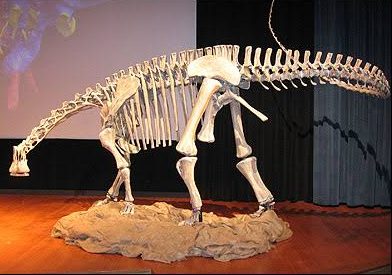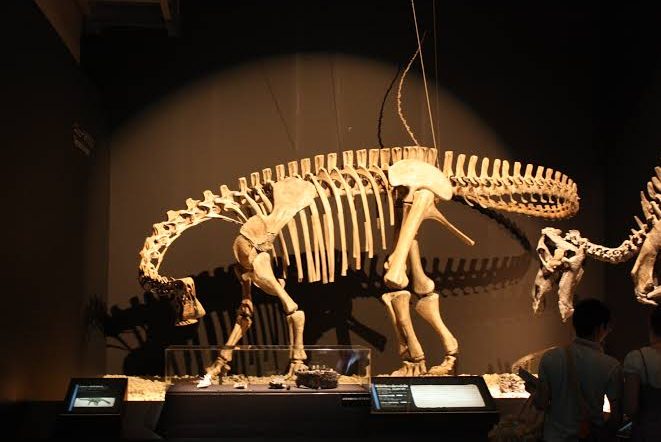Nigersaurus was a 30-foot-long plant-eating dinosaur that roamed from what is now Niger’s the Sahara Desert 110 million years ago. It coexists with carnivorous dinosaurs such as Suchomimus, plant-eating dinosaurs ouranosaurus and lardaceous, and supercross in a rich habitat. Nigersaurus had a fragile skull and a jaw that was exceptionally large, lined with teeth that were specially designed for eating plants near to the ground. The exceptionally large, simple nose of this long-necked reptile, capped with much more than 500 interchangeable teeth, distinguishes it.
Table of Contents
Discovery of the Nigersaurus Faqueti:
Scientists claim that the Nigersaurus Faquetias was the very first Dinosaur to have 500 interchangeable teeth. It’s the scientist’s name that comes to mind when we consider the study that revealed the presence of Nigersaurus Faqueti. Philippe Taquet is a very well paleontologist from France who is well during world. When Niger was a part of the United States, several fragments of Nigersaurus Faqueti were discovered in 1976. How many teeth does a Dinosaur have? The year 1999 investigates it by precisely defining it. This was accomplished following the discovery of Nigersaurus Faqueti bones.
Nigersaurus: What Does It Eat?
After you’ve learned Which Dinosaur has 500 teeth? You must be aware of what youngsters consume. The Nigersaurus, like other sauropods, was a herbivore dinosaur. Angiosperms, ferns, and shrubs were most likely part of its diet.
Because the bones in its jaws are brittle, some experts believe it utilized its canines to slice crops and then draw them into the vapor motion because its gait was likely to slow. The herbivore did a fantastic job coexisting with successfully delivered from the dinosaur epoch, as well as enormous theropods and Crocodylomorphs. African woods and plains were the dinosaurs’ natural environment.
Nigersaurus Weight:
It could have weighed up to 4 tons (4.4 smaller tons), the equivalent of a modern elephant. It possessed a shorter neck than a sauropod, with thirteen cervical vertebrae. The bulk of rebbachisaurids had smaller necks, only reaching a maximum length of 10,0 meters (33 ft). Rebbachisaurus is the only part of the group to grow to the size of more sauropods.
Nigersaurus Teeth:
The Nigersaurus seemed to have more than 500 nigersaurus teeth, which was one of its most distinguishing characteristics. This unusual herbivore is now thought to predominantly graze in the Sahara. With a big and broad mouth, gather food. Behind the head, the nose is large. Nigersaurus’ face has been compared to that of a vacuum cleaner by paleontologist Paul Sereno.
The jaw, teeth, and lips of Nigersaurus have been at the very least unusual. That is the only documented generally strong with a jaw that is broader than the head in terms of the jaw structure. It is also the only quadruped capable of inspecting the teeth that develop laterally at the front of the jaw. This strange creature had such unusual natural teeth, especially when compared to sauropod dinosaurs.
Nigersaurus Teeth Shape:
The Nigersaurus’ jaw bone contained roughly 60 tiny needle-like supports. In the bottom jaw, there are approximately 68 pillars. Nigersaurus has around 500 separate teeth when viewed as a whole pillar. This suggests that the bottom jaw had nine pairs of tooth replacements۔
The position of Nigersaurus teeth also contributes to their peculiarity. Having straight teeth at the front of the mouth is ineffective for removing leaves in between the branches of a tree.
Nigersaurus Dimensions:
Nigersaurus is a member of the sauropod family, which includes some of the world’s largest dinosaurs. Other sauropods, like Brachiosaurus and Ursocas, were much smaller than Nigersaurus. Nigersaurus, for example, is likely to have been roughly 30 feet in length, while the typical dinosaur was about 85 feet in length. Diplodocus weighed about 25 tonnes on average, roughly just like current African elephants (about 4-5 tonnes). As a result, you might picture a Nigerian dragon as a small giant in the grand scheme of things. Nigersaurus is smaller and has a shorter neck than its relatives.
Facts About Nigersaurus:
Nigersaurus was dubbed a “Mesozoic Cow” by scientists.
It appears to have specialized in lawn-mower impersonations: The broad nose and shredding teeth of the Nigersaurus were suited for grazing on ground-level plants.
Nigersaurus was given its official name in 1976, but it wasn’t until the late 2000s that paleontologists had a good notion of what the creature looked like. Why? The skeleton of this dinosaur was hollow in numerous areas, making it subject to breaking and distortion. Although fossils were plentiful before 1997, no good ones had been discovered, thus for many years, no one imagined that Nigersaurus was any kind of chase sauropod.
It had disproportionate eyes.
Although not anything about Nigersaurus appears proportionate, its cartoon eyes were unusually large by sauropod norms for unexplained reasons.
The Spine of the Nigersaurus Was Partly Full of Air
Its vertebrae in the neck are nothing more than tiny bone shells. Many of Nigersaurus’ skeletons were hollow, as were those of many other dinosaurs (and all modern-day birds), suggesting the existence of a complex, avian-style respiratory system.
Nigersaurus was a long-necked dinosaur
Make a five-times-faster version of the sentence! Sauropods are known for having long necks; certain animals with particularly long necks might have a distance of nearly 35 feet from their stands head and shoulders. However, Nigersaurus and its closest relatives (collectively known as the “Rebbachisauridae”) have little to boast about in this regard.




